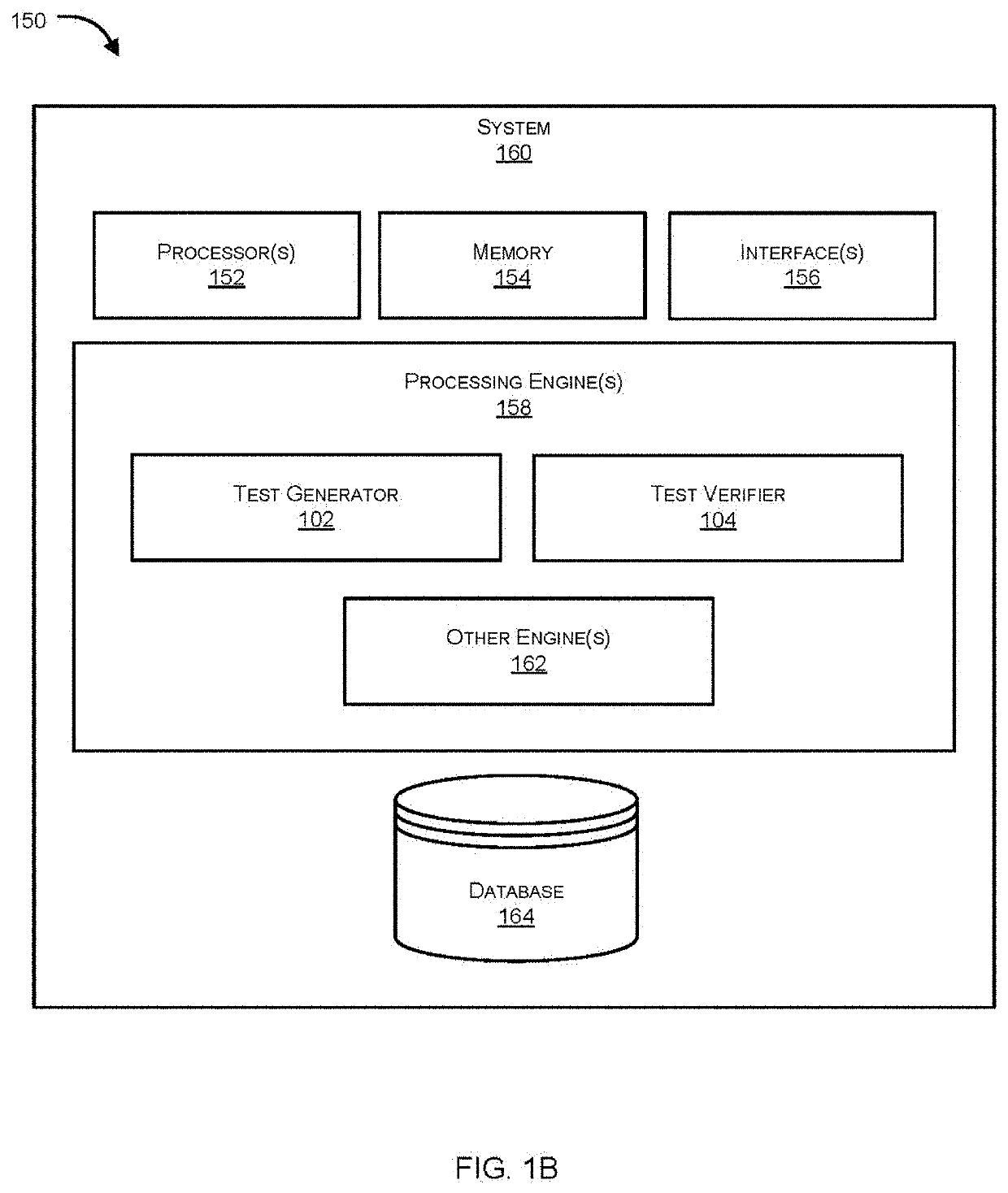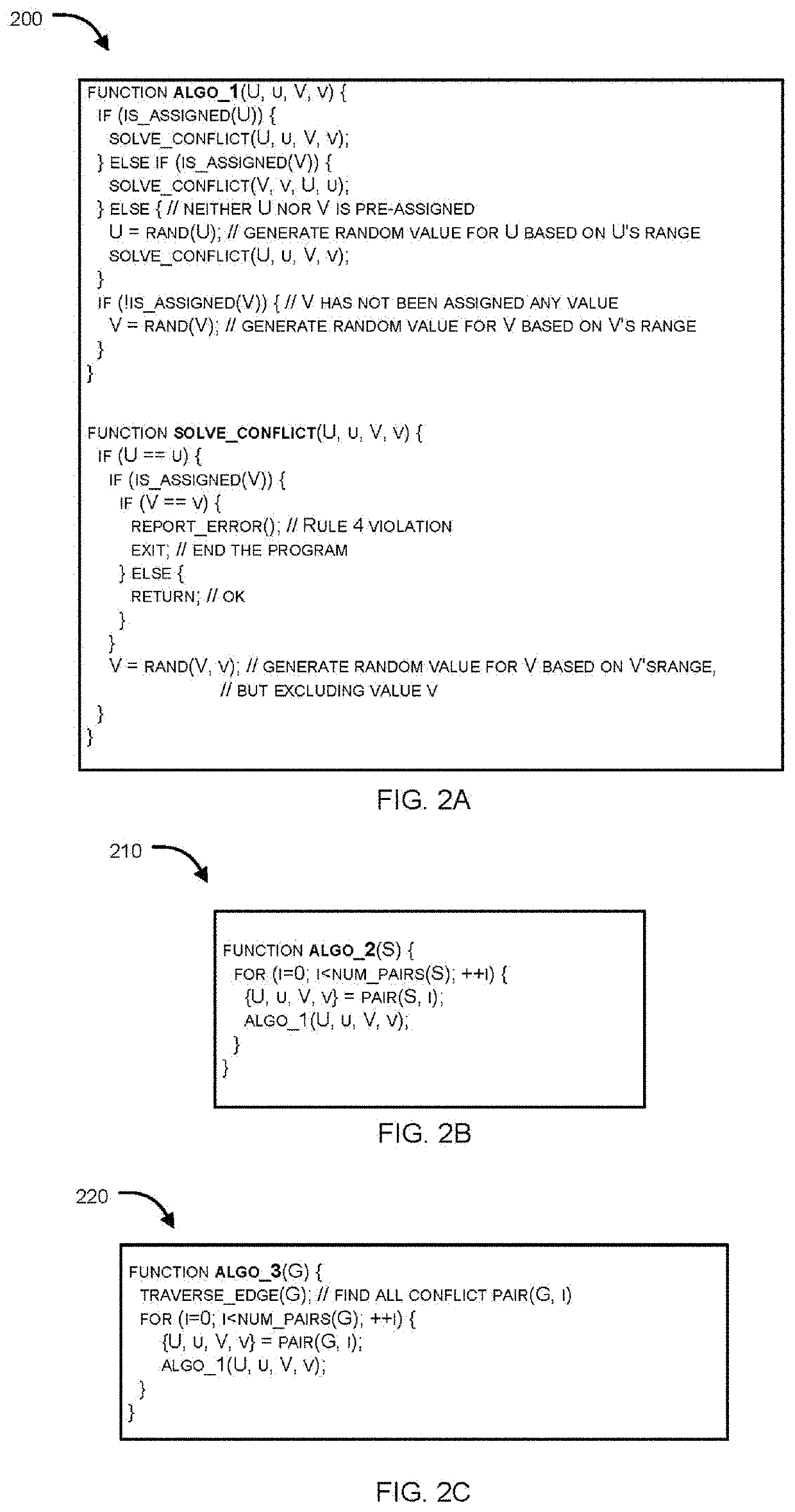Generating design verification test cases using a restricted randomization process based on variable dependencies
a randomization process and variable dependency technology, applied in the field of hardware design verification, can solve the problem of inefficient randomization approach and nave approach
- Summary
- Abstract
- Description
- Claims
- Application Information
AI Technical Summary
Benefits of technology
Problems solved by technology
Method used
Image
Examples
Embodiment Construction
[0015]Systems and methods are described for generating design verification test cases using a restricted randomization process. Due to design features of a hardware design under test that result in dependencies among various variables, certain combinations of values of the variables may not be feasible. Additionally, some scenarios represented by test cases created by a naïve randomization process may not be supported by the design. Therefore, existing naïve randomization approaches that blindly generate test cases without regard for variable dependencies are inefficient as they produce an over inclusive set of test cases. Since design verification is an expensive process in terms of simulation resources and engineering time, it is desirable to focus the limited engineering and simulation resources on verifying features that the design intends to support. As such, embodiments described herein seek to provide configuration information to a design verification system that can be used ...
PUM
 Login to View More
Login to View More Abstract
Description
Claims
Application Information
 Login to View More
Login to View More - R&D
- Intellectual Property
- Life Sciences
- Materials
- Tech Scout
- Unparalleled Data Quality
- Higher Quality Content
- 60% Fewer Hallucinations
Browse by: Latest US Patents, China's latest patents, Technical Efficacy Thesaurus, Application Domain, Technology Topic, Popular Technical Reports.
© 2025 PatSnap. All rights reserved.Legal|Privacy policy|Modern Slavery Act Transparency Statement|Sitemap|About US| Contact US: help@patsnap.com



